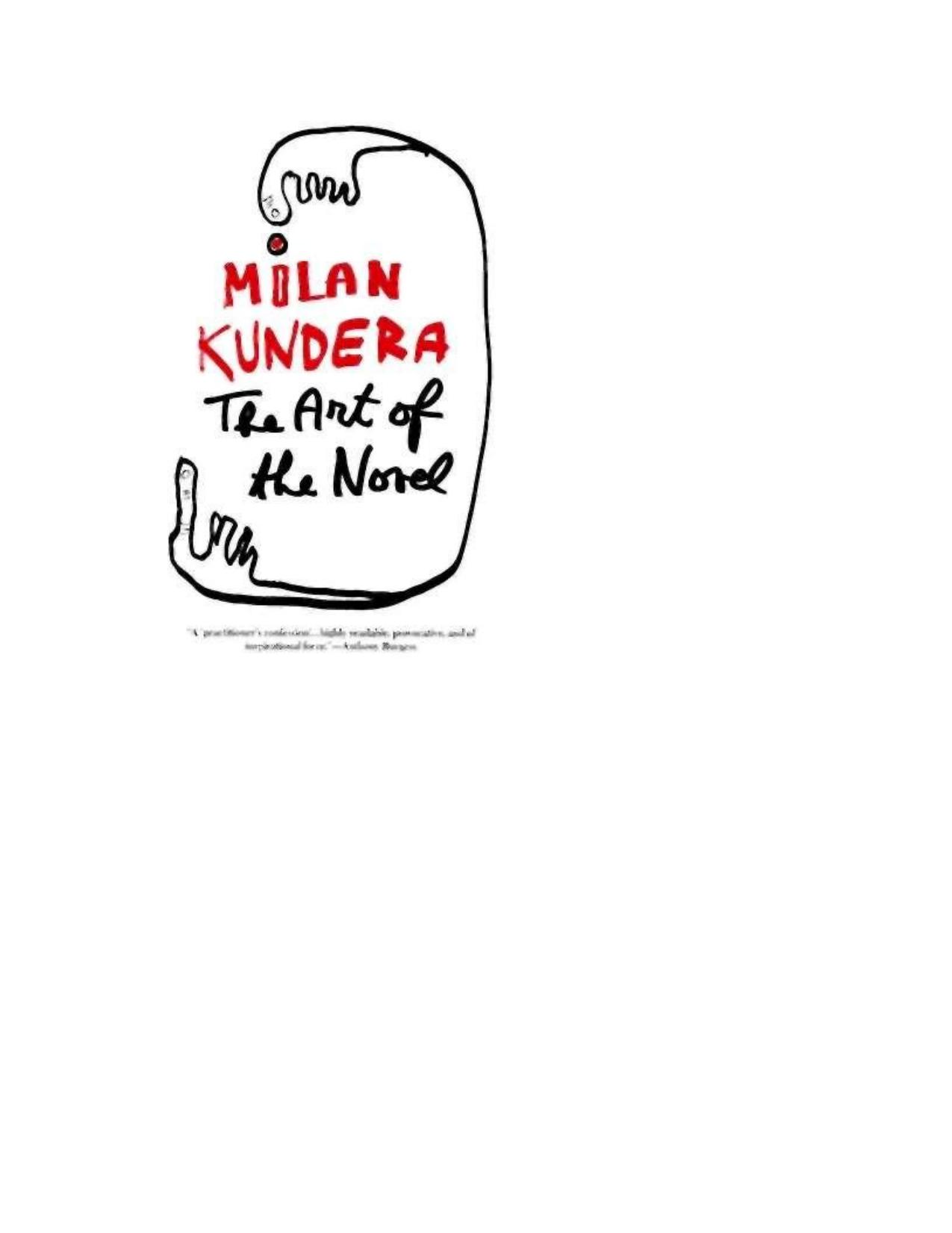The Art of the Novel by Milan Kundera

Author:Milan Kundera [Kundera, Milan]
Language: eng
Format: epub, pdf
Published: 2010-12-22T18:30:00+00:00
C.S.: By that broad a definition, we could even call The Decameron a novel! All of its stories are connected by the same theme of love and told by the same ten narrators . . .
M.K.: I won't be so provocative as to call The Decameron a novel. Still, that book is one of the first efforts in modern Europe to create a large-scale composition in narrative prose, and as such it has a place in the history of the novel at least as its source and forerunner. You know, the novel took the particular historical path it took. It could just as easily have taken a completely different one. The novel form is almost boundless freedom. Throughout its history, the novel hasn't taken much advantage of that. It has missed out on that freedom. It has left unexplored many formal possibilities.
C.S.: Still, except for The Book of Laughter and Forgetting, your own novels, too, are based on a unity of action, if of a rather loose sort.
M.K.: I've always constructed them on two levels: on the first, I compose the novel's story; over that, I develop the themes. The themes are worked out steadily within and by the story. Whenever a novel abandons its themes and settles for just telling the story, it goes flat. A theme, on the other hand, can be developed on its own, outside the story. That approach to theme I call digression. Digression means: abandoning the story for a moment. All of the reflection on kitsch in The Unbearable Lightness of Being, for example, is a digression: I leave off telling the novel's story to go at my theme (kitsch) directly. Considered from that viewpoint, digression enhances the discipline of the composition rather than weakening it. I make a distinction between theme and motif. Motif is an element of the theme or of the story that appears several times over the course of the novel, always in a different context. For instance, the motif of the Beethoven quartet that moves from Tereza's life into Tomas' thoughts and runs through the various themes as well: the theme of weight, the kitsch theme; or the motif of Sabina's bowler hat, which appears in the Sabina/Tomas, Sabina/Tereza, and Sabina/Franz scenes, and which also illustrates the "words misunderstood" theme.
C.S.: But what exactly do you mean by the word "theme"?
M.K.: A theme is an existential inquiry. And increasingly I realize that such an inquiry is, finally, the examination of certain words, theme-words. Which leads me to emphasize: A novel is based primarily on certain fundamental words. It is like Schoenberg's "tone-row." In The Book of Laughter and Forgetting, the "row" goes: forgetting, laughter, angels, litost, border. Over the course of the novel, those five principal words are analyzed, studied, defined, redefined, and thus transformed into categories of existence.
The novel is built on those few categories the way a house is built on its pillars. The pillars of The Unbearable Lightness of Being: weight, lightness, soul, body, the Grand March, shit, kitsch, compassion, vertigo, strength, weakness.
Download
This site does not store any files on its server. We only index and link to content provided by other sites. Please contact the content providers to delete copyright contents if any and email us, we'll remove relevant links or contents immediately.
Asking the Right Questions: A Guide to Critical Thinking by M. Neil Browne & Stuart M. Keeley(5705)
Autoboyography by Christina Lauren(5202)
Eat That Frog! by Brian Tracy(4479)
Dialogue by Robert McKee(4352)
Sticky Fingers by Joe Hagan(4142)
Journeys Out of the Body by Robert Monroe(3588)
Annapurna by Maurice Herzog(3445)
Full Circle by Michael Palin(3413)
Schaum's Quick Guide to Writing Great Short Stories by Margaret Lucke(3342)
Elements of Style 2017 by Richard De A'Morelli(3322)
The Art of Dramatic Writing: Its Basis in the Creative Interpretation of Human Motives by Egri Lajos(3035)
Atlas Obscura by Joshua Foer(2925)
Why I Write by George Orwell(2911)
The Diviners by Libba Bray(2905)
In Patagonia by Bruce Chatwin(2893)
The Fight by Norman Mailer(2883)
The Mental Game of Writing: How to Overcome Obstacles, Stay Creative and Productive, and Free Your Mind for Success by James Scott Bell(2873)
Venice by Jan Morris(2545)
The Elements of Style by William Strunk and E. B. White(2452)
